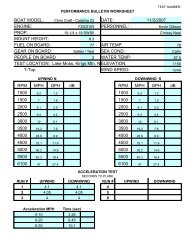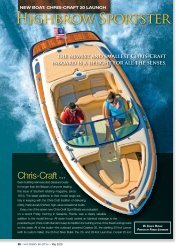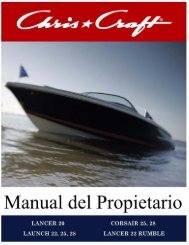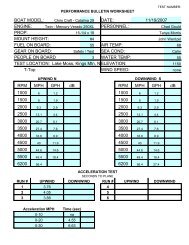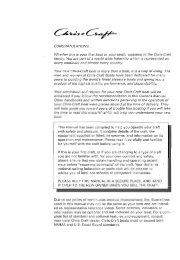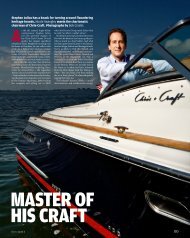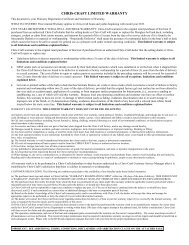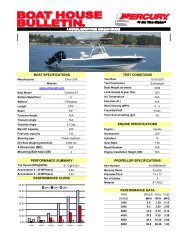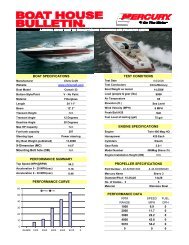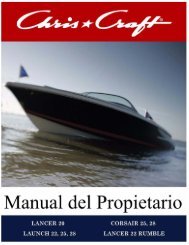Catalina Owner's Manual - Chris Craft
Catalina Owner's Manual - Chris Craft
Catalina Owner's Manual - Chris Craft
Create successful ePaper yourself
Turn your PDF publications into a flip-book with our unique Google optimized e-Paper software.
Safety and Operations<br />
Figure 2-2. Passing Port-to-Port<br />
If it is not possible to pass port-to-port due to some obstruction or other boat traffic, you should sound two<br />
short blasts to indicate that you are intending to pass starboard-to-starboard (Figure 2-3). Ensure the other<br />
boat understands your intentions before proceeding.<br />
Crossing<br />
When engaged in a crossing situation, where two vessels are approaching at right angles (or close to) and a<br />
risk of collision exists, the vessel on the right is the stand-on vessel and must hold course and speed. The<br />
give-way vessel must maneuver in such a way as to keep clear of the stand-on vessel. The give-way vessel<br />
must pass to the stern of the stand-on vessel. The give-way vessel shall slow, stop, or reverse to allow the<br />
stand-on vessel to pass.<br />
Overtaking<br />
Figure 2-3. Passing Starboard-to-Starboard<br />
If one boat wishes to overtake (pass) another boat, the vessel astern must initiate the signal indicating his<br />
desire to pass. The vessel being passed (overtaken) is the stand-on vessel. The boat doing the passing<br />
(overtaking) is the give-way vessel (Figure 2-4).<br />
Figure 2-4. Overtaking<br />
To pass on the port side you should signal two (2) short blasts. To pass on the starboard side you should<br />
signal one (1) short blast.<br />
<strong>Chris</strong>-<strong>Craft</strong> 2–9





